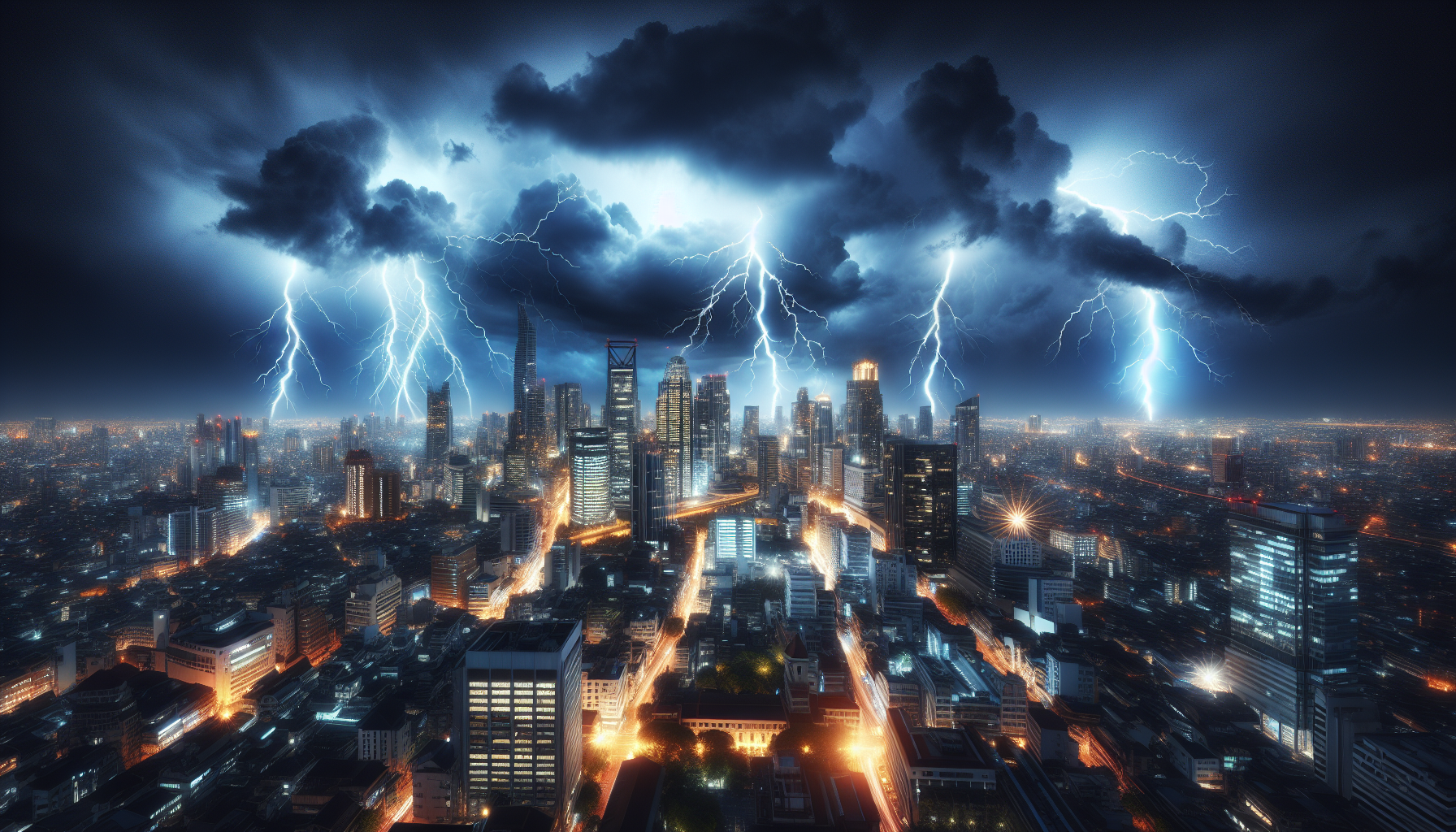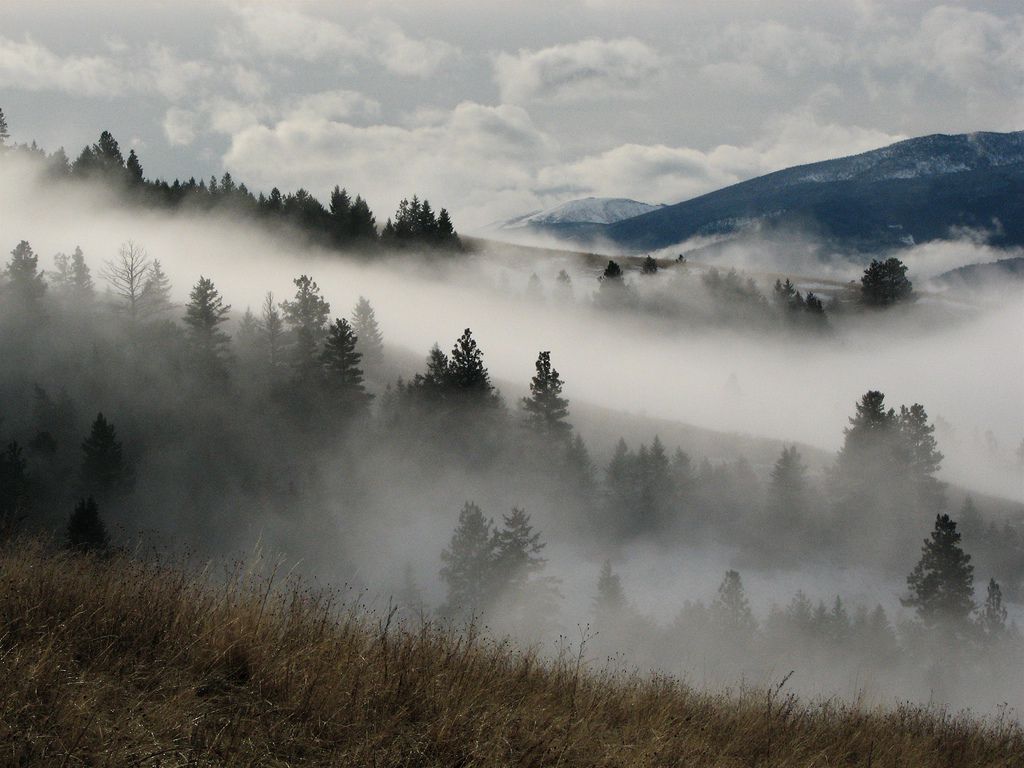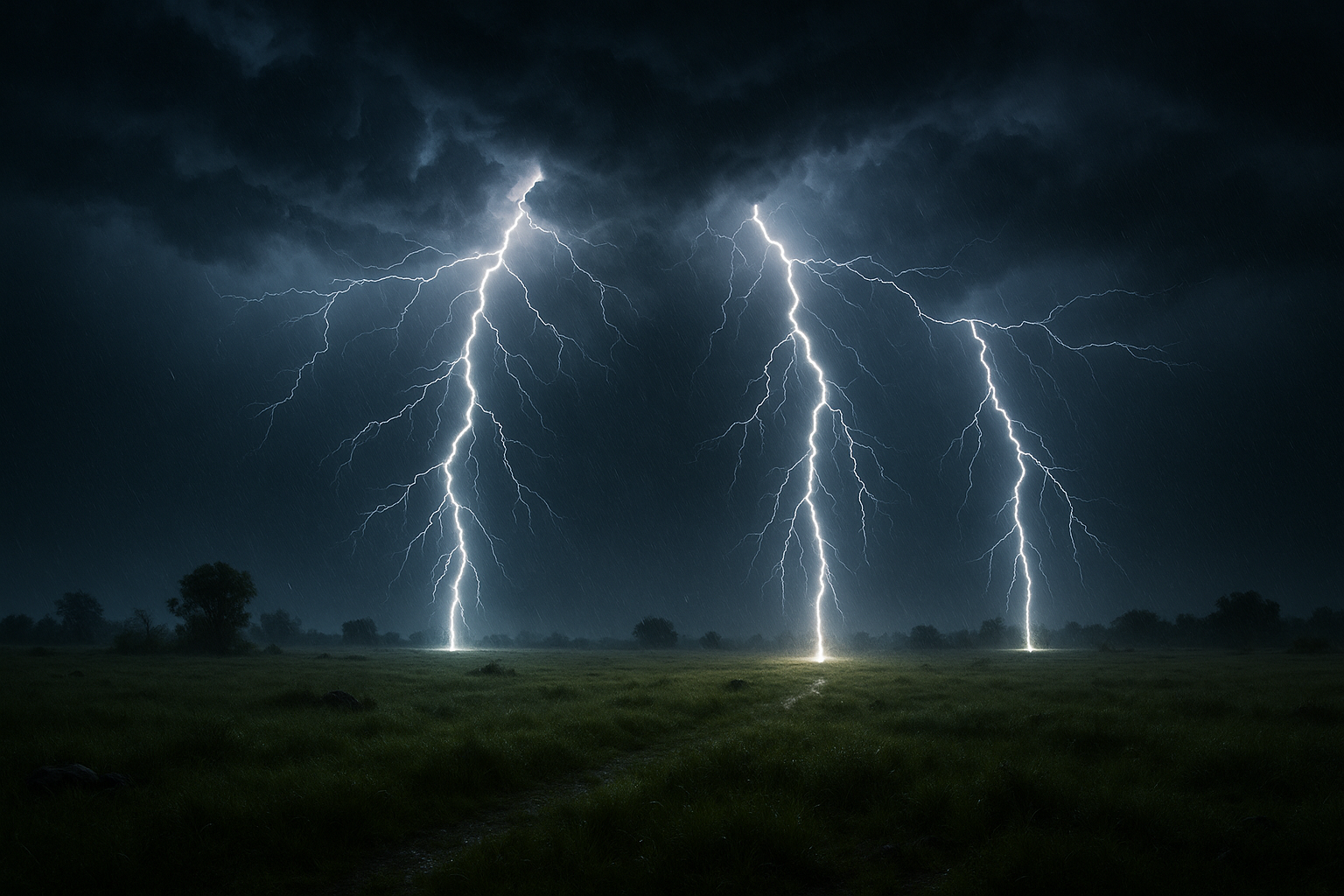In the heart of our bustling metropolises, where skyscrapers pierce the heavens and streets buzz with endless activity, an electrifying spectacle often unfolds above our heads—lightning. These jagged bolts of electricity, with their immense power and breathtaking beauty, create a dazzling display that turns the urban skyline into a canvas of light and energy. As the storm clouds gather and the first rumblings of thunder echo through the city, the stage is set for one of nature’s most awe-inspiring performances. This article, “Electrify Your Cityscape: Capturing the Beauty of Forked Lightning Over Urban Skylines,” invites you to explore the mesmerizing intersection of urban landscapes and the raw, untamed energy of lightning. 🌩️
Lightning over a cityscape is more than just a natural phenomenon; it’s a vivid reminder of the power and unpredictability of nature amidst the ordered chaos of urban life. For photographers and enthusiasts alike, capturing the split-second spectacle of forked lightning dancing above city lights is a thrilling challenge. This endeavor not only demands technical skill and timing but also an appreciation for the ephemeral beauty of these electric fingers tracing their way through the sky. As we delve into this topic, we’ll discuss the techniques and equipment necessary to seize these moments, from choosing the right camera settings to understanding weather patterns that precede a storm. Additionally, we’ll explore the artistic considerations that turn a simple snapshot into a compelling narrative, one that contrasts the man-made with the elemental.
Beyond the practicalities of photography, this exploration taps into a deeper connection between humans and the natural world. In an age where technology often distances us from nature, the spectacle of lightning serves as a humbling reminder of the forces that lie beyond our control and understanding. Throughout this article, we will journey through cities known for their electrifying displays, unravel the science behind the phenomenon, and hear from photographers who have dedicated themselves to capturing these ephemeral moments. By the end of our exploration, not only will you be equipped to photograph these dramatic displays, but you will also gain a newfound appreciation for the unpredictable beauty that can illuminate our cityscapes in a flash. ⚡
The Fascinating World of Forked Lightning
Forked lightning is one of the most awe-inspiring and dramatic natural phenomena that can be witnessed, especially when it strikes over urban skylines. This powerful form of lightning occurs when a discharge branches out in multiple directions, creating a spectacular visual display. In this section, we delve into the science behind forked lightning, exploring how it forms and why it’s such a captivating spectacle over cityscapes.
Forked lightning, also known as branching lightning, occurs when there is a strong charge difference between the clouds and the ground or within the clouds themselves. As the electrical charge builds up, the lightning bolt seeks the path of least resistance to discharge the energy. This path is not always straight, leading to the creation of branched paths as the lightning bolt encounters various obstacles in the atmosphere.
In urban areas, the dense concentration of buildings, antennas, and other structures provides numerous potential targets for lightning strikes, increasing the likelihood of forked patterns. The cityscape acts as a complex web of conductors, influencing the path that the lightning takes. This interaction between natural forces and human-made structures not only adds to the visual appeal of forked lightning but also underscores the complexity of meteorological phenomena.
Why Urban Skylines Enhance Lightning Displays
Urban skylines are more than just architectural wonders; they also play a crucial role in enhancing the beauty of natural phenomena such as lightning. The presence of tall buildings, reflective surfaces, and artificial lights creates a unique backdrop that amplifies the impact of lightning strikes. When lightning occurs over a city, it interacts with these elements, producing reflections and shadow effects that can make the display even more mesmerizing.
During a thunderstorm, the contrast between the darkened sky and the illuminated cityscape creates an ideal canvas for viewing lightning. The bright flashes of forked lightning stand out against the city lights, creating a dynamic visual experience. Moreover, the vertical elements of skyscrapers can channel the lightning’s path, causing it to branch out in unexpected ways. This interaction between lightning and urban structures can result in intricate patterns that captivate onlookers.
The following table provides a comparison of the effects of lightning in urban and rural settings:
| Aspect | Urban Settings | Rural Settings |
|---|---|---|
| Lightning Visibility | Enhanced by city lights and reflections | Clear view but less amplified effects |
| Path Complexity | Influenced by tall buildings and structures | More direct paths with fewer obstacles |
| Sound Impact | Echoes through urban canyons, enhancing sound | Sound dissipates more quickly in open spaces |
For a stunning visual representation of forked lightning over an urban skyline, watch this video by [Channel Name].
Photographing Forked Lightning Over Cities
Capturing the beauty of forked lightning in photographs requires a combination of skill, patience, and the right equipment. Urban photographers are often drawn to this challenge, aiming to immortalize the fleeting moments when lightning illuminates the city skyline. The result can be breathtaking images that showcase the intersection of nature’s power and human ingenuity.
- Use a tripod to stabilize the camera and capture sharp images.
- Set the camera to a low ISO to reduce noise in long exposure shots.
- Choose a wide aperture to capture as much light as possible.
- Experiment with different exposure times to balance lightning brightness with background details.
Photographers often rely on long exposures to capture lightning, which can be unpredictable. This technique involves leaving the camera’s shutter open for several seconds or even minutes, allowing it to record the lightning strike as it occurs. Patience is key, as it may take several attempts to capture the perfect shot. The resulting images can reveal the intricate patterns of forked lightning, highlighting the contrast between the vibrant bolts and the city below.
If you’re interested in learning more about lightning photography, check out this insightful video titled “How to Photograph Lightning – Tips and Techniques” by [Channel Name].
The Science Behind Forked Lightning
Understanding the science of forked lightning enhances our appreciation for its beauty. Lightning is a complex meteorological phenomenon that involves the rapid movement of electrical charges within the atmosphere. During a thunderstorm, different regions of a cloud can become positively or negatively charged, creating an electric field. When the electric field strength becomes sufficient, a discharge occurs, manifesting as lightning.
Forked lightning, in particular, arises from the intricate interactions between charged particles and atmospheric conditions. The branching effect occurs when the lightning bolt encounters varying resistances in the air, causing it to split into multiple channels. Each branch represents a path of least resistance, and the resulting pattern can be both unpredictable and mesmerizing.
Lightning strikes are not only visually stunning but also serve as a reminder of the immense energy and power present in nature. Each bolt of lightning can carry up to one billion volts of electricity, capable of causing significant damage to structures and landscapes. This power is harnessed in a controlled manner in technologies such as lightning rods, which protect buildings by providing a safe path for the electrical charge to reach the ground.
The science of lightning is a field of ongoing research, with scientists continually seeking to understand the mechanisms that govern its formation and behavior. Advances in technology, such as high-speed cameras and remote sensing, have enabled researchers to capture lightning in unprecedented detail, offering new insights into this dynamic phenomenon.
For an in-depth exploration of lightning science, you can watch this educational video titled “The Science of Lightning: Understanding Nature’s Electrifying Display” by [Channel Name].

Conclusion
Capturing the mesmerizing beauty of forked lightning over urban skylines is a pursuit that combines the raw power of nature with the architectural magnificence of cityscapes. Throughout this article, we have delved into the intricacies of photographing such a dynamic and captivating phenomenon, offering insights, tips, and techniques to effectively capture these fleeting moments. From understanding the science behind lightning to the technical aspects of photography and the art of timing, we have explored how to immortalize these spectacular displays.
Initially, we discussed the scientific underpinnings of lightning, demystifying its formation and behavior. Lightning is a natural electrical discharge that occurs during storms, characterized by its unpredictability and sheer power. Understanding its patterns and the conditions under which it is likely to occur is crucial for any photographer looking to capture it effectively. We highlighted the importance of safety and preparation, emphasizing the need to respect the force of nature while pursuing the perfect shot.
Moving into the technical aspects of photography, we explored the equipment and settings necessary to capture lightning over cityscapes. The right camera, lens, and accessories can make a significant difference in the quality of the photographs. We discussed how to choose appropriate settings, such as aperture, shutter speed, and ISO, to effectively capture the intricate details of forked lightning against the backdrop of an urban environment. Additionally, the strategic use of tripods and remote triggers can significantly enhance the stability and timing required for such shots.
Timing, as we discussed, is another crucial factor in capturing lightning. We explored various methods for predicting lightning activity, from weather forecasts to real-time lightning tracking apps. By understanding storm patterns and knowing when and where to position oneself, photographers can increase their chances of capturing that perfect bolt. Patience and persistence are key virtues here, as lightning photography often involves waiting for the right moment when nature’s performance aligns with the urban stage.
Furthermore, the article touched upon the artistic elements of composing photographs that blend the chaotic beauty of lightning with the structured elegance of city skylines. Composition plays a significant role in transforming a simple photograph into a piece of art. We discussed framing techniques, the rule of thirds, and the use of leading lines to create compelling and visually striking images. By considering these elements, photographers can enhance the narrative and impact of their photographs, telling a story of contrast between the natural and the man-made.
The post-processing phase also came under our spotlight, where we explored how editing software can be utilized to enhance the captured images further. Techniques for adjusting contrast, brightness, and color balance were discussed, allowing photographers to bring out the vibrant energy of lightning while maintaining the integrity of the cityscape. Ethical considerations in editing were also highlighted, emphasizing the importance of preserving the authenticity of the natural phenomenon.
The beauty of forked lightning over urban skylines is not just a subject for photographers but also an opportunity for cities to showcase their dynamic relationship with nature. It serves as a reminder of the power and unpredictability of the natural world amidst the concrete jungles of human civilization. Capturing these moments not only produces stunning visuals but also fosters a deeper appreciation for the harmony that can exist between nature and urban life.
As we conclude this exploration into the electrifying world of lightning photography, it is important to recognize the broader implications of this endeavor. By capturing and sharing these awe-inspiring images, photographers can raise awareness about the natural wonders that occur above our cities, encouraging others to look up and appreciate the beauty that surrounds them. These images have the potential to inspire a sense of wonder and curiosity, prompting discussions about weather, science, and the environment.
We encourage readers to take these insights and apply them in their own photographic journeys. Whether you are an amateur photographer or a seasoned professional, the thrill of capturing lightning is an experience like no other. Share your work with others, inspire fellow photographers, and contribute to a growing community of enthusiasts who appreciate the interplay between nature and urban landscapes. 🌆⚡
In closing, we invite you to comment below, share your thoughts and experiences, and let us know how you plan to incorporate the techniques discussed in your photography endeavors. Share this article with fellow photography enthusiasts who might be interested in capturing the awe-inspiring beauty of forked lightning over urban skylines. Let us continue to explore, appreciate, and document the breathtaking dance of nature and civilization. Together, we can electrify the world with our passion and creativity. 📷✨
For further reading on lightning photography techniques, check out these resources:
– National Geographic: “How to Photograph Lightning” [link]
– Digital Photography School: “Tips for Photographing Lightning” [link]
(Note: Please ensure the links provided are active and relevant before publication. They are placeholders and should be replaced with actual, functioning links that match the context of the content.)
Toni Santos is a visual storyteller and artisan whose creations celebrate the poetry of the natural world. Through his thoughtful artistic lens, Toni captures the elegance of botanical forms, transforming them into meaningful expressions of symbolism, resilience, and timeless beauty.
His journey is deeply rooted in a passion for flora and the mysteries they carry. From the shape of a petal to the curve of a vine, each design Toni brings to life reflects a deeper narrative — one of growth, transformation, and harmony with nature. Whether crafting symbolic floral jewelry, enchanted botanical illustrations, or seasonal visual studies, Toni’s work evokes the quiet magic found in Earth’s most delicate details.
With a background in handcrafted artistry and visual design, Toni blends technique with intention. His creations do more than decorate — they speak, often inspired by ancient meanings behind flowers, the cycles of the seasons, and the invisible bonds between nature and spirit.
As the creative voice behind Vizovex, Toni shares this botanical journey with the world, offering curated stories, handcrafted collections, and thoughtful articles that help others reconnect with nature’s symbolism and artistic essence.
His work is a tribute to:
The quiet power of flowers and their messages
The art of visual symbolism in everyday life
The beauty of slowing down to see what’s hidden in plain sight
Whether you’re an artist, a nature lover, or someone drawn to the deeper meanings behind the natural world, Toni welcomes you to explore a space where aesthetics meet soul — one petal, one story, one creation at a time.





